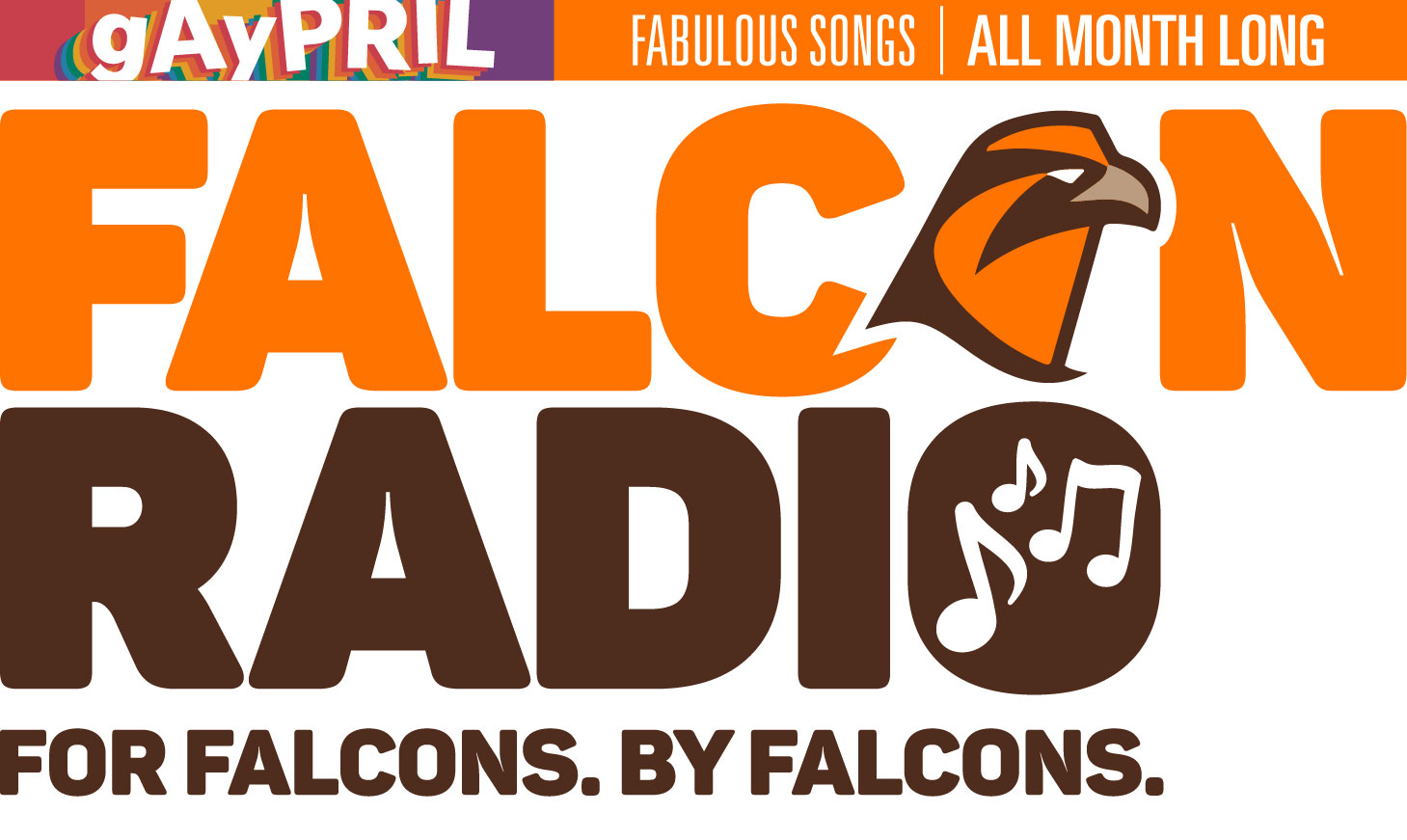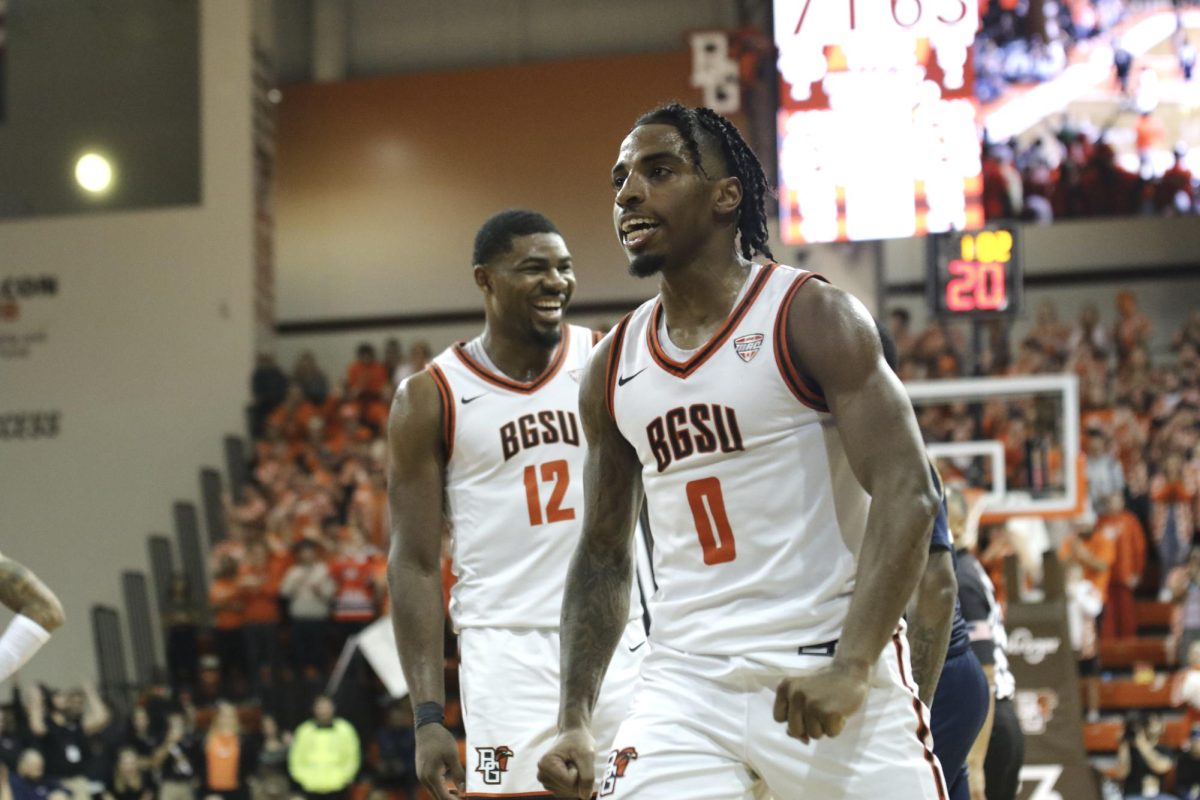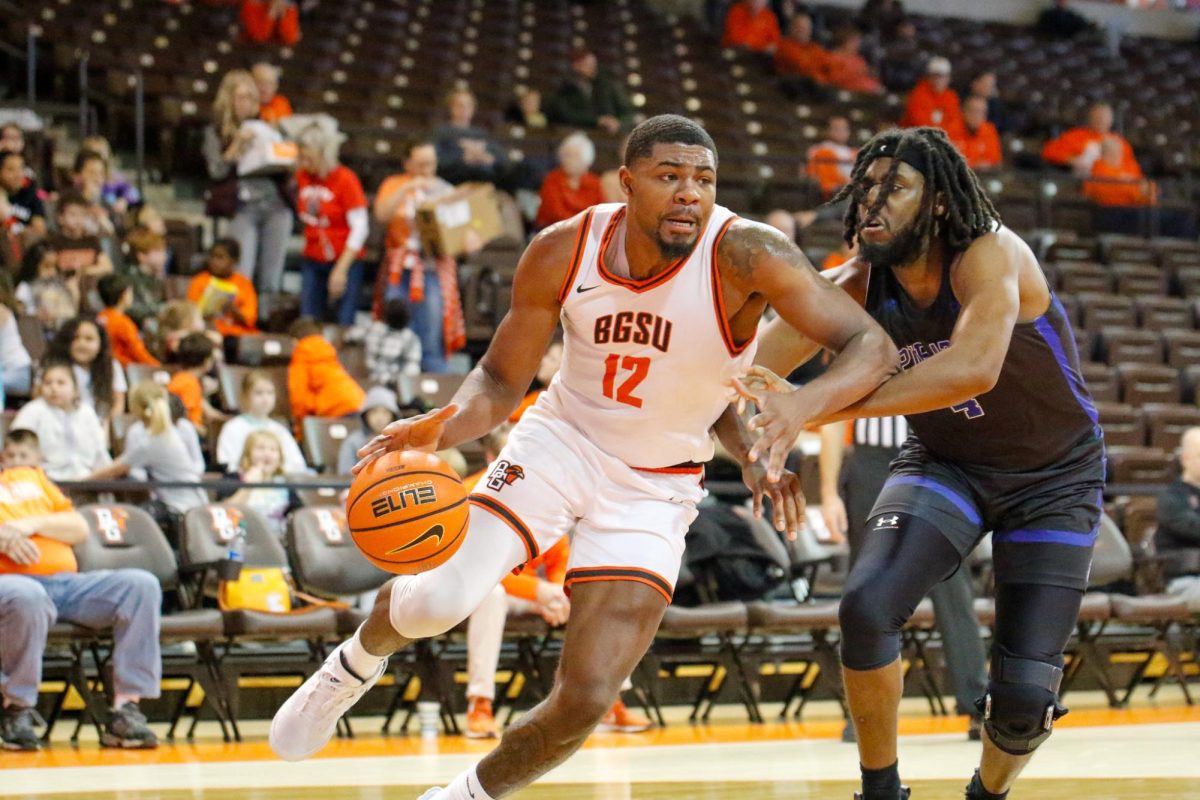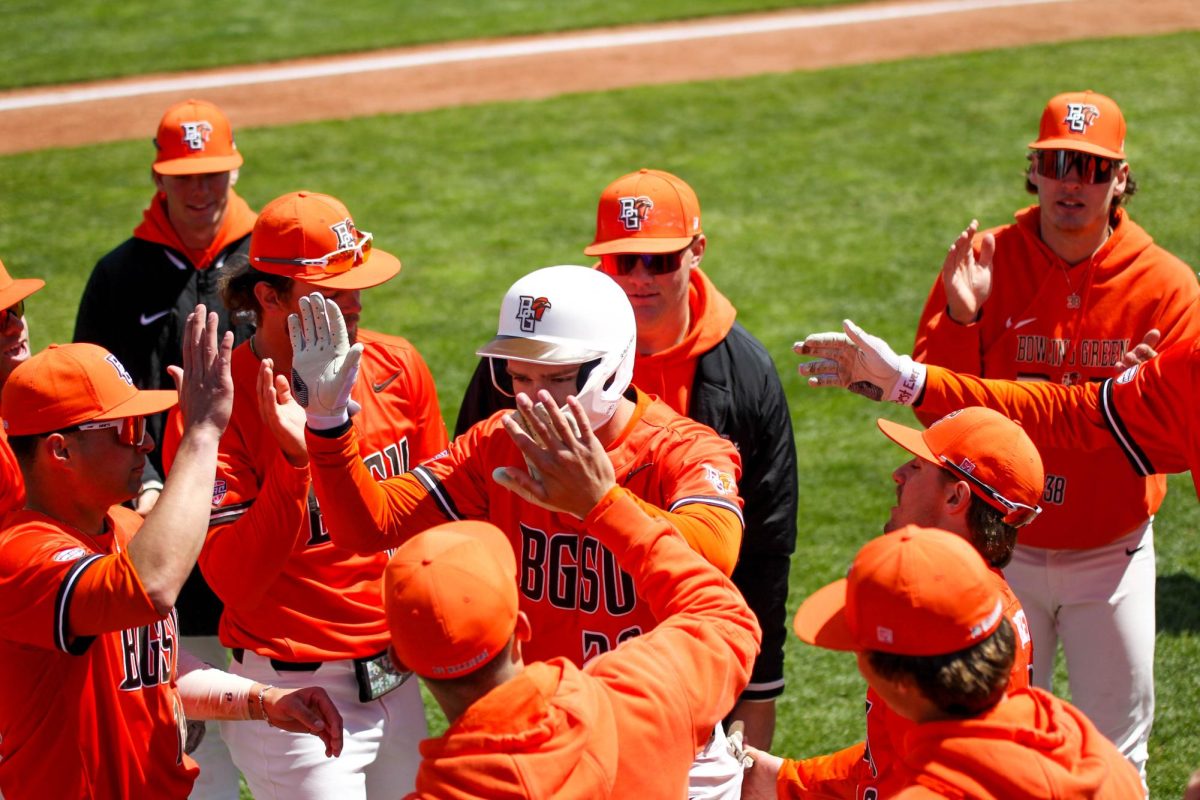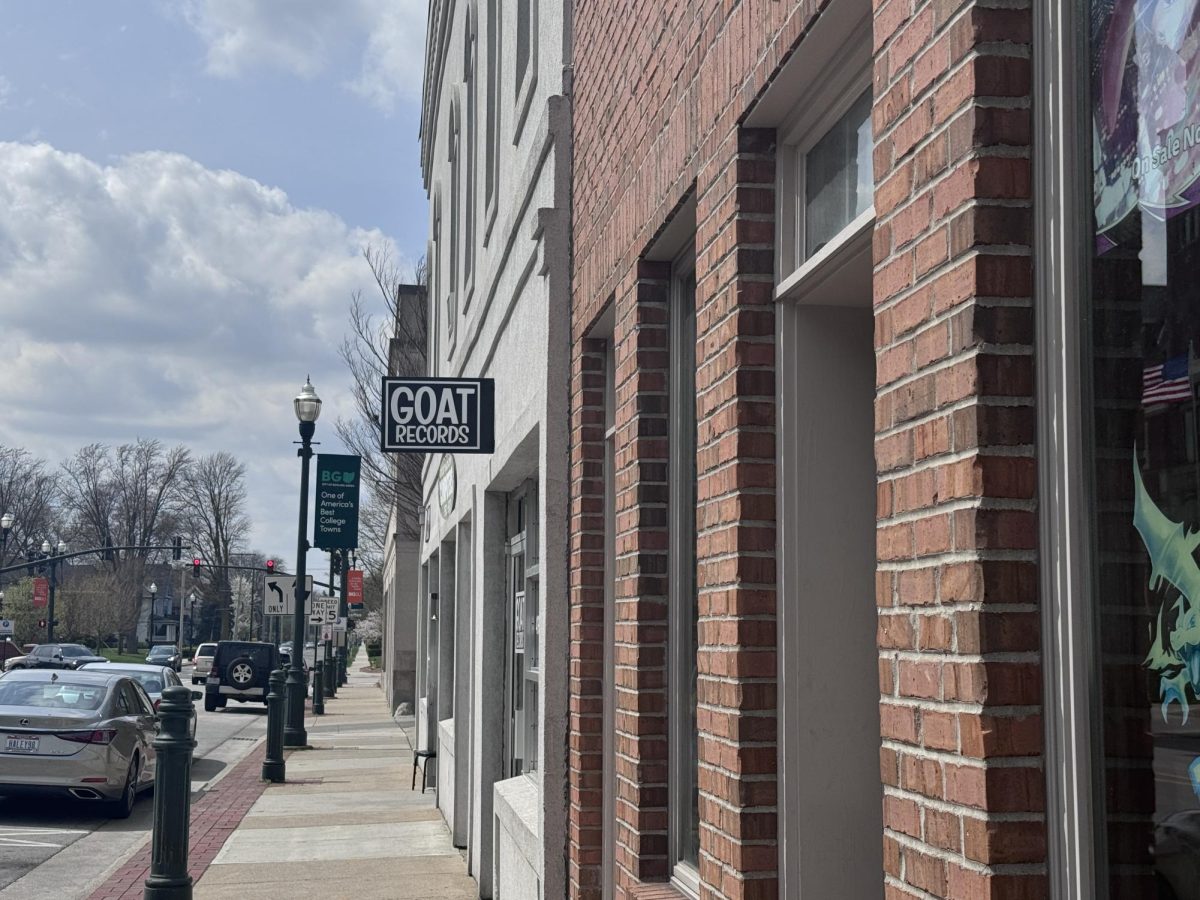Reporter’s note: Scroll to the bottom for an interactive map and statistics on blacks and baseball.
Western Michigan outfielder Jamie Simpson knows what it feels like to be alone on a team.
The Broncos’ left fielder appeared in the batter’s box during the first inning of an April 21 game against the University. Simpson eventually grounded out to end the inning, stranding teammate Grant Simotes on first base.
But Simpson was noticeable in another way during his at-bat.
“It does suck being the only black player,” Simpson said.
Simpson is one of 14 black baseball players on the active 2010 Mid-American Conference roster, according to a BG News investigation. Blacks make up 3.54 percent of the 395 collegiate players in the MAC.
“It does bother me… you get used to it after a while because there are not too many of them,” Simpson, the lone black player on WMU’s roster, said.
Player diversity in baseball is an issue spanning from Little League to higher, more competitive levels.
The University is one of four baseball teams in the MAC without a black player on its roster. Ohio University and the University of Akron have three black players on their teams, the most among MAC teams.
Next year a black player will play for the University. Brandon Howard, a top-ranked high school infielder from the Cincinnati area, has committed to the University.
But Howard is a minority in another regard. Coach Danny Schmitz said he’s only coached “six to eight” black players in his 20-year tenure at the University.
Even the major leagues have fewer blacks participating in baseball compared to past decades.
Two weeks ago, Major League Baseball celebrated the 63rd anniversary of Jackie Robinson breaking baseball’s color barrier and helping progress race relations.
News outlets released research about race and baseball to coincide with the historic date. A USA Today study concluded blacks comprise 9.5 percent of 2010 Opening Day Major League Baseball rosters.
The number of blacks playing baseball has considerably decreased throughout the years, dropping from 10.2 percent in 2009 and peaking at 27 percent in 1975, according to a Gallup Poll and Sports Illustrated.
If the amount of blacks playing baseball is to increase, it has to start with young people playing the game, said Ed Scrutchins, Toledo City Athletic League commissioner for Toledo Public Schools.
“We don’t have that many African Americans participating in baseball,” Scrutchins said. “You find very few Afro-Americans playing baseball. They just don’t play it.”
Blacks are quickly disappearing from baseball diamonds, batting cages and dugouts.
But why is there a lack of participation of blacks in baseball?
Local area experts attribute the absence of blacks in baseball to four reasons: Lack of youth participation up to high school, more opportunities or scholarships available in other collegiate athletics, history negatively impacting the sport and a little-to-no interest in the game.
Lack of youth participation
Its been more than five years since a black baseball player from TPS has received a scholarship to play college baseball. And when one does receive a scholarship, it’s a rarity, Scrutchins said.
Scrutchins said it’s because few blacks play in organized baseball growing up. About one-third of baseball players playing within TPS are black.
“We have not and will not have any college level high school baseball players of a minority come out of Toledo Public Schools,” Scrutchins said. “Once they get to high school, they don’t play baseball.”
But why do blacks bypass baseball in favor of other sports like basketball and football?
Jack Taylor, an ethnic studies instructor at the University, said the opportunities presented for blacks to play baseball when younger are limited.
Taylor said the reasons for blacks not playing at a young age include:
•Accessibility: Putting up a rim, dribbling a basketball and throwing a football can be with one or two people. In order to play a full-fledged baseball game, multiple players are needed.
•High poverty rates: In major inner cities, such as Cleveland, Milwaukee and Philadelphia, Taylor said the unemployment rates reach 60 percent, making it nearly impossible to fund baseball fully and properly.
•Coaches: Many adults living in inner cities cannot teach baseball properly or have no incentive to do so. And few white coaches make the trips from the suburbs.
•Expense: Taylor said it’s almost impossible for an inner-city youth to be equipped with the proper equipment. To purchase gloves, helmets, bats, along with upkeep of the field, makes the cost astronomical for those living in poor areas.
•Transportation: Up to 30 percent of blacks in the United States don’t have access to transportation, making it hard for them to travel to parks and play.
Because of these factors, blacks turn away from baseball, making it nearly impossible to recruit in inner cities.
Even though Schmitz would like to promote diversity through his baseball teams, he’d rather put the best team out there — regardless of race.
“We recruit very, very hard,” Schmitz said. “We don’t look at the color of the skin. We look at the baseball player.”
University Athletic Director Greg Christopher supports Schmitz 100 percent in his recruiting efforts, but stresses the importance of diversity on campus.
“It’s something we always have to be vigilant with and we always need to work to improve and ensure we are doing the best job that we can,” Christopher said. “I don’t think our roster from a diversity standpoint looks much different, if any different than the typical Mid-American Conference or northern mid-major baseball roster.”
Christopher said he welcomes the idea of hosting an open-and-free baseball clinic for blacks living in inner-city Toledo. It could also raise interest in baseball and provide an additional recruiting opportunity.
Scrutchins said he thinks this opportunity could help increase black participation in baseball around the northwest Ohio area, but it will take more than a clinic to revive baseball in inner-city Toledo.
“[Clinics] could [help], but if the interest is not there, if the kids don’t want to come to the clinics, if you don’t have a parent or somebody involved and structured in the right way for the kid to stay involved or get involved, it will not help,” he said.
Limited opportunities
The University allots 11.7 full academic scholarships to its baseball student-athletes.
Because of 1972’s Title IX, the amount of scholarships, or opportunities, provided for male athletes must equal the same for women.
And because football takes up the majority of male scholarships with 85, baseball presents fewer opportunities for those seeking full tuition.
“If I was a kid, white or black, and if I had athletic ability and I wanted to get a scholarship, I would be damn good in the sport that is giving out the most scholarship because college is expensive,” said Matt Donahue, pop culture instructor.
Baseball can’t afford to give everyone a full ride. Many times, players on the teams will split the scholarship so everyone can get a portion of the money.
Other than football, men’s basketball also presents more opportunities for students by providing 13 scholarships.
History hurts baseball
Jackie Robinson is arguably the most influential figure progressing race relations in the United States’ history. Robinson preceded Brown v. Board of Education, Rosa Parks, Martin Luther King Jr. and various civil rights movements.
But since Robinson proved blacks and whites could coincide with one another, few black baseball figures have done little in the past six decades to progress race relations in American culture, said Ray Schuck, instructor in the communications department and researcher of the history of baseball.
Schuck said the majority of blacks started playing more basketball and football in the 1960s compared to baseball for two primary reasons.
First, baseball seems to be stuck in a “conservatism” state of mind. Baseball markets itself as “The National Pastime,” and a bulk of baseball’s pastime occurred when blacks weren’t allowed in the sport.
“We think about how baseball gets represented as the good ol’ days. Well those good ol’ days were the white good ol’ days,” Schuck said. “It’s easier for a white boy to self-identify to baseball than it is for a black boy.”
Second, and because of Schuck’s reasoning, Taylor said children then identify easier with black basketball and football players. The NBA and NFL capitalized on its black athletes in the second half of the 20th century when baseball stood idle.
Since Major League Baseball stood still and didn’t promote its black superstars in the last half of the 20th century, less blacks are playing today.
“You can imagine yourself as Bill Russell or Wilt Chamberlain or Kareem or Magic or Michael. You can do that all by yourself,” Taylor said. “Baseball you can’t do that.”
Little-to-no interest
The answer as to why blacks don’t like baseball could be a simple one: They are just not interested.
“I think baseball is boring because you are just standing there,” said Adrien Spencer, a black sophomore cornerback on the Falcon football team. “With football and basketball, there is a lot more action. You can make a lot more plays, show your real athletic ability.”
Because of attitudes like Spencer’s, football is the most popular sport and America’s game, Donahue said.
“I really see football as the new national pastime,” Donahue said. “I think that is a broad perspective for all of America. I don’t think it’s just limited to the African-American community or the white community — it’s a national phenomenon.”
But just because Spencer quit playing baseball doesn’t mean all blacks should do the same.
“Not too many African Americans play baseball,” Spencer said. “[The low number of blacks is] a little disturbing but we also understand why.”
Even though the University cannot control who plays baseball, having a low number of blacks playing for the University for the last 20 years could be detrimental.
Schuck said a black might not want to play at the University if he sees no one of similar skin color.
“If I’m a black ballplayer, what’s my incentive to come here?” Schuck said. “Am I going to feel out of place and nobody is on my side?”
Solutions
There are entities trying to solve the problem.
MLB instituted its Reviving Baseball in Inner Cities initiative, promoting baseball in more than 200 deprived areas, such as Detroit, Atlanta and Compton, Calif.
Schuck believes today’s black superstars, such as Atlanta Braves’ rookie outfielder Jason Heyward, could attract blacks to the game after seeing him hit 500-foot home runs and make diving catches.
Taylor said the father is an influential figure in a young man’s life. By tossing balls and batting practice, a child can develop into a baseball player.
Players at the collegiate level are also doing their part on an individual basis.
Simpson helps his younger cousins become better baseball players. He attends their Little League games and offers tips on how to become the best athlete regardless of race.
Simpson knows the amount of blacks playing in the MAC is low, but he is used to being the only black on the baseball field. “I’ve been doing this all my life so I have an advantage,” he said. “I adapt really well with my teammates, so it wasn’t a problem or struggle at all.”
Simpson is one person, but is doing his part to reverse the trend of fewer blacks in baseball.
“It’s very important that you can get a very diverse group, especially the African Americans more involved.”
Baseball Breakdown:
42 – Jackie Robinson’s jersey number. To commemorate his legacy and breaking baseball’s color barrier April 15, 1947 for the Brooklyn Dodgers, the No. 42 jersey is retired throughout Major League Baseball and Minor League Baseball. It’s the only jersey number to be retired throughout MLB.
27 – The percentage of blacks in MLB during the 1975 season, the highest ever.
14 – The number of black baseball players in the Mid-American Conference.
11.7 – The amount of scholarships the University baseball team is allowed to give to student-athletes.
9.5 – The percentage of blacks appearing on 2010 Opening Day rosters in the MLB. Blacks constitute about 82 percent of National Basketball Association players and 66 percent of National Football League players following the 2008 seasons.
6 – The percentage of blacks playing baseball in the National Collegiate Athletic Association in 2003, the most recent survey conducted. The same study concluded blacks make up 25 percent of all athletes in a collegiate sport.
4 – The number of teams in the MAC, including the University, without a black player on the 2010 active roster.
3.54 – The percentage of black players in the MAC.
3.31 – The percentage of black players in the Horizon League, a comparable conference to the MAC.
1 – The number of black players committed to the University next year.
0 – The number of black players, out of 30 roster spots, on the University’s 2010 baseball roster.
INTERACTIVE MAP Only 14 African Americans, or 3.54 percent, represent the 395 collegiate baseball players on active Mid-American Conference rosters.
Four out of the 12 teams don’t have a black player on their roster.
Click on each marker to see black players from each team. Click the link to visit each team’s full roster.
Colors indicate:
Red: Teams has no black players
Blue: Teams have one black player
Green: Teams have multiple black players
View Black baseball players around the MAC in a larger map


